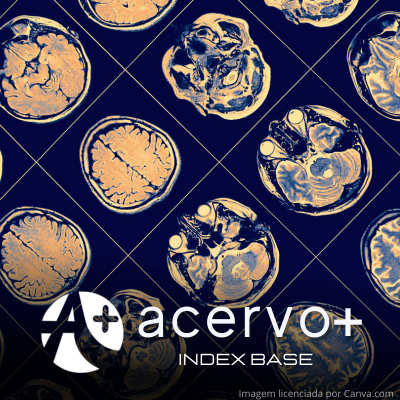O impacto da neuroinflamação no autismo
##plugins.themes.bootstrap3.article.main##
Resumo
Objetivo: Examinar os diferentes mecanismos relativos à neuroinflamação que estão associados com a promoção do TEA. Métodos: Se trata de uma revisão integrativa de literatura, com artigos publicados entre os anos de 2019 a 2024, em português e inglês, com texto completo. Se utilizou a pergunta norteadora: Como os mecanismos neuroinflamatórios influenciam na manifestação do TEA? O trabalho foi realizado entre os meses de janeiro a abril de 2024, realizando um levantamento bibliográfico nas bases de dados: PubMed National Institutes of Health, National Center for Biotechnology Information (NCBI), MDPI, através dos Descritores em Ciência e Saúde (DECs): Neuroinflammation, Myelination, Microglia, Notch,Glial Cell, Microbiota, Maternal Immune Activation relacionando a Autism. Resultados: Após análise e aplicação dos critérios de inclusão e exclusão, foram localizados 2562 trabalhos, sendo eliminados 2539 trabalhos por não se adequarem a temática proposta ou não se enquadrarem nos critérios de exclusão, resultando em 25 artigos como amostra final. Considerações finais: Se faz importante o estudo sobre o processo neuroinflamatório para desenvolver vias terapêuticas, como o uso de anti-inflamatórios, antioxidantes, inibidores da via Notch para melhorar a qualidade de vida de pessoas com TEA.
##plugins.themes.bootstrap3.article.details##
Copyright © | Todos os direitos reservados.
A revista detém os direitos autorais exclusivos de publicação deste artigo nos termos da lei 9610/98.
Reprodução parcial
É livre o uso de partes do texto, figuras e questionário do artigo, sendo obrigatória a citação dos autores e revista.
Reprodução total
É expressamente proibida, devendo ser autorizada pela revista.
Referências
2. ANDOH M, et al. Microglia as possible therapeutic targets for autism spectrum disorders. Progress In Molecular Biology And Translational Science, 2019; 223-245.
3. BROWN AS. Epidemiologic studies of exposure to prenatal infection and risk of schizophrenia and autism. Dev Neurobiol, 2012; 72: 1272-1276.
4. CEROLA L, et al. Regulation of dendritic spine length in corticopontine layer V pyramidal neurons by autism risk gene β3 integrin, Mol Brain, 2023; 16:49.
5. CSOKA AB, et al. Roles of Epigenetics and Glial Cells in Drug-Induced Autism Spectrum Disorder. Biomolecules, 2024; 14: 437.
6. DAVOLI-FERREIRA M, et al. Microbiota and Microglia Interactions in ASD. Frontiers In Immunology, 2021; 12: 1-15.
7. EVE M, et al. Neuronal Cell Adhesion Molecules May Mediate Neuroinflammation in Autism Spectrum Disorder. Frontiers In Psychiatry, 2022; 13: 842755.
8. FAN G, et al. Microglia Modulate Neurodevelopment in Autism Spectrum Disorder and Schizophrenia. International Journal Of Molecular Sciences, 2023; 24(24): 17297.
9. FERRUCCI L, et al. Microglia at the Tripartite Synapse during Postnatal Development: implications for autism spectrum disorders and schizophrenia. Cells, 2023; 12(24): 2827.
10. GALVEZ-CONTRERAS AY, et al. Role of Oligodendrocytes and Myelin in the Pathophysiology of Autism Spectrum Disorder. Brain Sciences, 2020;10(12): 951.
11. HUGHES HK, et al. Innate immune dysfunction and neuroinflammation in autism spectrum disorder (ASD). Brain, Behavior, And Immunity, 2023; 108: 245-254.
12. LI Y, et al. The Notch1/Hes1 signaling pathway affects autophagy by adjusting DNA methyltransferases expression in a valproic acid-induced autism spectrum disorder model. Neuropharmacology, 2023; 239: 109682.
13. LIAO X, et al. The glial perspective of autism spectrum disorder convergent evidence from postmortem brain and PET studies. Frontiers In Neuroendocrinology, 2023; 70: 101064.
14. LUNA PR, et al. Transtorno do espectro autista e nutrição: qual o impacto dos hábitos alimentares e da suplementação pré e pós-natal na vida da criança? Revista Eletrônica Acervo Científico 2021; 39: 9285.
15. LUO Y e WANG Z. The Impact of Microglia on Neurodevelopment and Brain Function in Autism, Biomedicines, 2024; 12(1): 210.
16. MATTA SM. et al. The influence of neuroinflammation in Autism Spectrum Disorder. Brain, Behavior, And Immunity,2019; 79: 75-90.
17. MAURO LBA, Autismo: Relação com Neuroinflamação e Desenvolvimento do Colículo Superior, RJ. Dissertação (Monografia em Ciências Biológicas) - Universidade Federal Fluminense, Rio de Janeiro, Niterói, 2021; 1-25.
18. MURAKAMI Y, et al. Maternal Inflammation with Elevated Kynurenine Metabolites Is Related to the Risk of Abnormal Brain Development and Behavioral Changes in Autism Spectrum Disorder. Cells, 2023; 12: 1087.
19. PANGRAZZI L, et al. Natural Antioxidants: a novel therapeutic approach to autism spectrum disorders?. Antioxidants, 2020; 9(12): 1186.
20. PHAN BN, et al. A myelin-related transcriptomic profile is shared by Pitt–Hopkins syndrome models and human autism spectrum disorder. Nature Neuroscience, 2020; 23: 375-385.
21. RAVACCIA D e GHAFOURIAN T. Critical Role of the Maternal Immune System in the Pathogenesis of Autism Spectrum Disorder. Biomedicines, 2020; 8: 557.
22. REIS DD, et al. Perfil epidemiológico dos pacientes com Transtorno do Espectro Autista do Centro Especializado em Reabilitação. Pará Research Medical Journal, 2019; 3 (1): 1-8.
23. SAGHAZADEH A, et al. A meta-analysis of pro-inflammatory cytokines in autism spectrum disorders: effects of age, gender, and latitude. Journal of Psychiatric Research, 2019; 115: 90-102.
24. SILVA DV, et al. Atuação do assistente social frente a criança autista e sua família no centro de referência da assistência social em um município do interior do Maranhão. Research, Society and Development, 2023; 12(3): 19012340645.
25. SINGH R, et al. Autism Spectrum Disorders: A Recent Update on Targeting Inflammatory Pathways with Natural Anti-Inflammatory Agents, Biomedicines, 2023; 11(1): 115.
26. SUPRUNOWICZ M, et al. Between Dysbiosis, Maternal Immune Activation and Autism: is there a common pathway?. Nutrients, 2024; 16(4): 549.
27. USUI N, et al. Neuroinflammation and Oxidative Stress in the Pathogenesis of Autism Spectrum Disorder. International Journal of Molecular Sciences, 2023; 24 :5487.
28. XIONG Y, et al. Microglia and astrocytes underlie neuroinflammation and synaptic susceptibility in autism spectrum disorder. Frontiers in Neuroscience, 2023; 17: 1125428.
29. ZAWADZKA A, et al. The Role of Maternal Immune Activation in the Pathogenesis of Autism: a review of the evidence, proposed mechanisms and implications for treatment. International Journal Of Molecular Sciences, 2021; 22: 11516.
30. ZHANG YH, et al. Roles of the Notch signaling pathway and microglia in autism. Behavioural Brain Research, 2023; 437: 114131.
31. ZHANG YH, et al. The Notch signaling pathway inhibitor Dapt alleviates autism-like behavior, autophagy and dendritic spine density abnormalities in a valproic acid-induced animal model of autism. Progress In Neuro-Psychopharmacology And Biological Psychiatry, 2019; 94: 109644.

